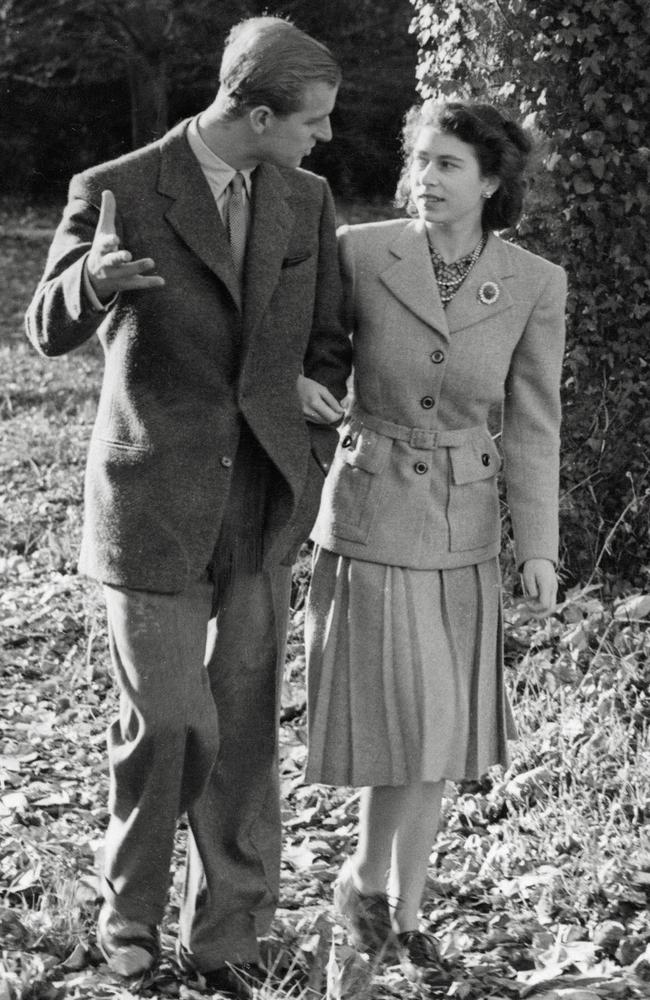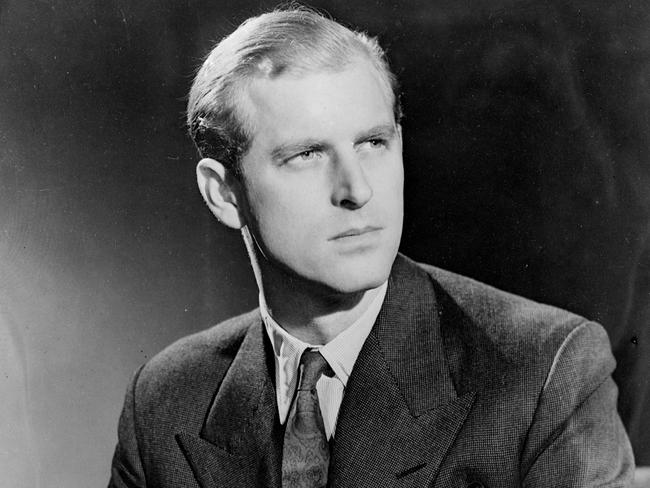How Prince Philip survived a tragic childhood to become the rock of the royal family
His early life was marred by tragic deaths, mental illness and exile. But Prince Philip always said he had nothing to complain about.
Royals
Don't miss out on the headlines from Royals. Followed categories will be added to My News.
In the natural order of things, a man who lives a long life sees a lot of death.
But Prince Philip saw more than his fair share from a very young age including consecutive family tragedies that would define the sort of man he would become as the “rock” of the British royal family for more than 70 years.

At a lunch to celebrate their golden wedding anniversary in 1997, the Queen summed his contribution up.
“He is someone who doesn’t take easily to compliments, but he has, quite simply, been my strength and stay all these years, and I and his whole family, in this and many other countries, owe him a debt greater than he would ever claim or we shall ever know,” the Queen was quoted as saying.

As the longest serving consort in the history of the British monarchy, Prince Philip was very much in the shadow of the Queen.
But his influence and support for the monarchy and the realm, including Australia, was his underlying passion and one he actively worked towards till the end. His was a life spent on public duty, attending more than 300 public engagements a year, and acting as patron of about 800 organisations including the one that carried his name the Duke of Edinburgh Awards scheme that has encouraged more than four million 14 to 24 year olds worldwide to reach their leadership and participation potential.
In many respects the scheme provides the sort of support the Duke never had at a similar age when he was forced to find his own way.

“Duke of Edinburgh Awards was something really close to him, it always was even in recent months, not just in that he carries its name but because of what it promoted here in Britain but other countries as well, including Australia of course, where the scheme is still pretty big,” a royal courtier said.

Of his hectic schedule, in 2016 his grandson Peter Phillips said the then 95-year-old thought he was 55 and often wore himself out.
To coincide with the Queen’s 90th birthday and his 95th in June 2016, a portrait of the couple at Windsor Castle taken by famed photographer Annie Leibovitz was released. It symbolised who the Queen described as her “stay and strength”, constantly by her side.

HOW IT ALL BEGAN
Born on the kitchen table of the family home on the Greek Island of Corfu in 1921, Philippos as he was formally registered was the only son and fifth child of Prince Andrew of Greece and Denmark and Princess Alice of Battenberg.
He was sixth in line to the Greek throne. His father was a commander of a Greek army division but when the Greco-Turkish War (1919-1922) went wrong for the Greeks, Andrew was arrested along with Philip’s uncle King Constantine I and the family sent into exile when Philip was just 18 months old. They had no money or status and initially moved to the UK before forced through hostility and suspicion in the UK to resettling in France and live in a small cottage at the rear of the Parisian estate of a distant relative Prince George of Greece.

By the time Philip was 10 he was estranged from every one of his immediate family with his father moving alone to the south of France, his four sisters all marrying German noblemen and moving there and his mother committed to a secure psychiatric sanatorium after a nervous breakdown. The latter in itself was a tragic upheaval for the young family, the children taken out on a day trip by relatives to return to find their mother gone, committed against her will.
Philip was shunted on to Germany then England to live with his mother’s family the Milford Havens and Mountbattens. His uncle George Mountbatten, second marques of Milford Haven, became his surrogate father for some years. Mountbatten was clever and inventive and showed great fondness for Philip, instilling in him core values.

Years later he recalled this time as something one just dealt with.
“It’s simply what happened, the family broke up,” he said. “My mother was ill, my sisters were married, my father was in the south of France. I just had to get on with it. You do. One does.”
He heard almost nothing from his parents for five years until a tragedy.
‘HIS SORROW WAS THAT OF A MAN’
In November 1937 his heavily pregnant sister Cecile and her husband the Grand Duke of Hesse George Donatus and their young sons and his mother boarded a flight to London where they were to attend a wedding. The three-engine Junker monoplane was to refuel in Brussels but thick fog meant the aircraft was rerouted to Ostend.
It was heavy fog there too but the pilot attempted to land flying blind through the fog and hit the chimney of a brick works at more than 160km/hr. There were no survivors and the remains of an infant were found next to Cecile with some suggestions the pilot attempted to land because she had been giving birth.
News of the deaths were delivered to Philip by his headmaster while he was at school in Scotland.

“His sorrow was that of a man,” Gordonstoun school headmaster Kurt Hahn said of the 16-year-old Philip after he delivered the news and received a stoic response.
Philip travelled alone to Germany for the funeral which was a grand public procession in the Hesse family home of Darmstadt south of Frankfurt. Columns of soldiers in full garb lined the streets adorned with swastikas, many giving the Nazi salute. Philip was surrounded in the procession by his brothers in law who were all in the military including the SS, the unit that would later be highly feared during World War II. Nazi leader and Hitler confidante Herman Goering attended the funeral; Hitler himself sent a letter of sympathy as did Nazi Minister for Propaganda Joseph Goebbels.

Philip returned to the UK but a year later his uncle and surrogate father died of bone marrow cancer. Philip was sent off to live with another relative, Lord Mountbatten. He rarely spoke about his past, his family or the tragedies he had seen, friends recalling a tremendous confidence he carried despite all that had gone on.

“What’s there to complain about,” he would remark years later of his childhood. “It was no great deal I just lived my life.”
One of his biographers Gyles Brandreth said: “As a boy, Prince Philip lost everybody and he became very self-reliant but he has spent a lifetime blocking it out.”
By 1939, Philip joined the Royal Navy and fought for the British while his brothers-in law fought for the Germans. In 1940 as a young midshipmen Philip spent four months at sea on battleship HMS Ramillies protecting diggers from the Australian Expeditionary Force cross the Indian Ocean. Philip was later dispatched to the Mediterranean where he was involved in the Battle of Crete and fought with distinction, earning mentions in military dispatches.

In 1942 at the age of 21 he was made first lieutenant, one of the youngest to gain such a rank in the Royal Navy. By this stage he was already writing regularly to a 16-year-old third cousin Elizabeth, King George VI’s daughter, who had fallen in love with him three years earlier after a chance meeting at the Royal Naval College in Dartmouth where Philip had been studying.
The union was sealed on November 20, 1947 when the couple were married.


